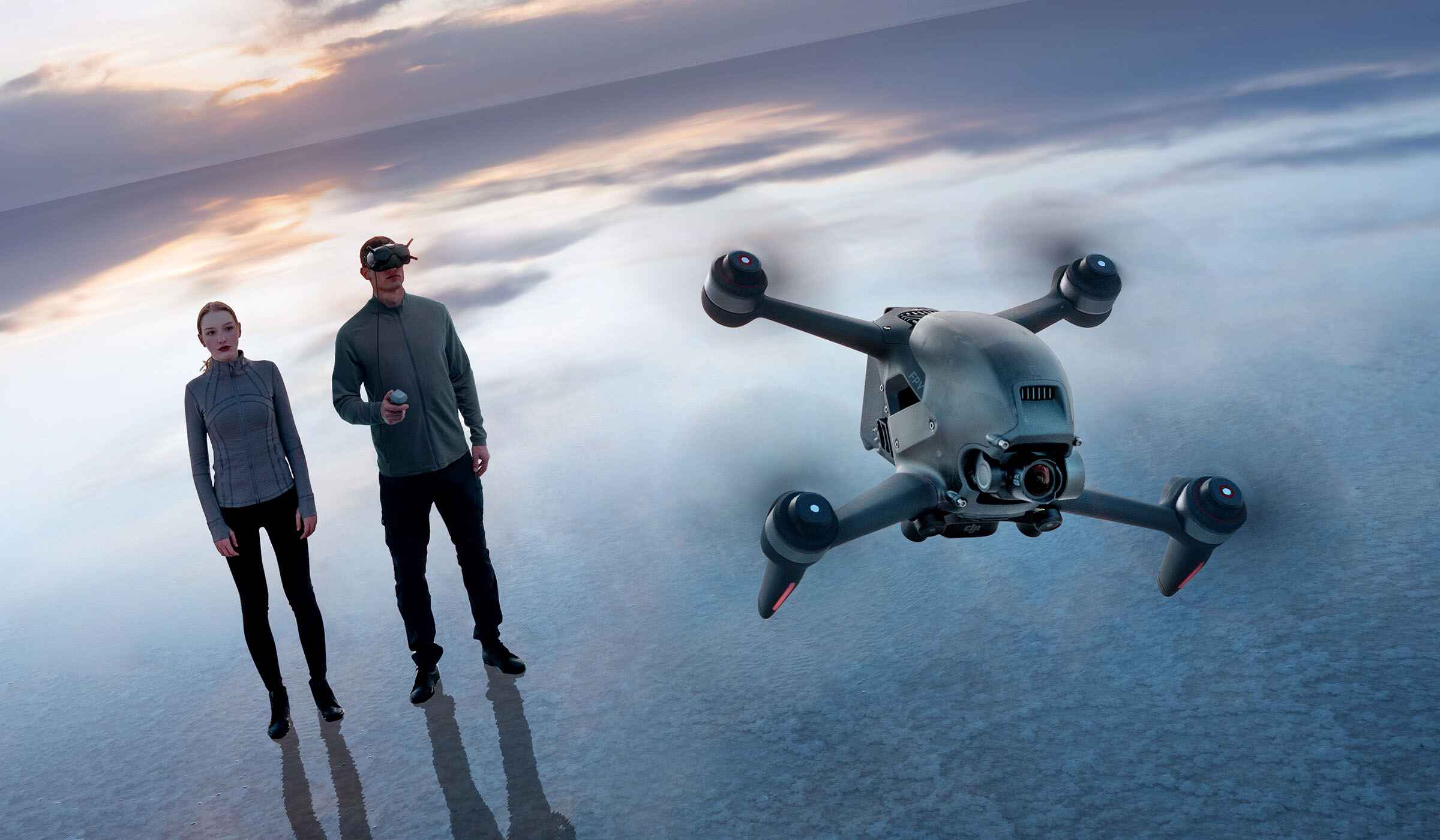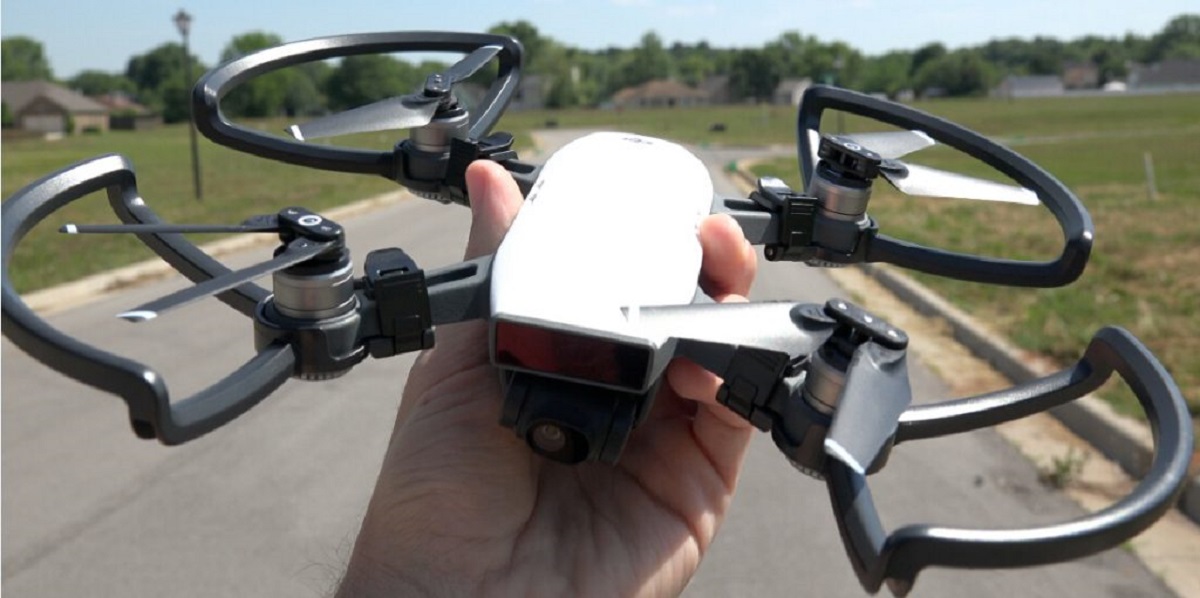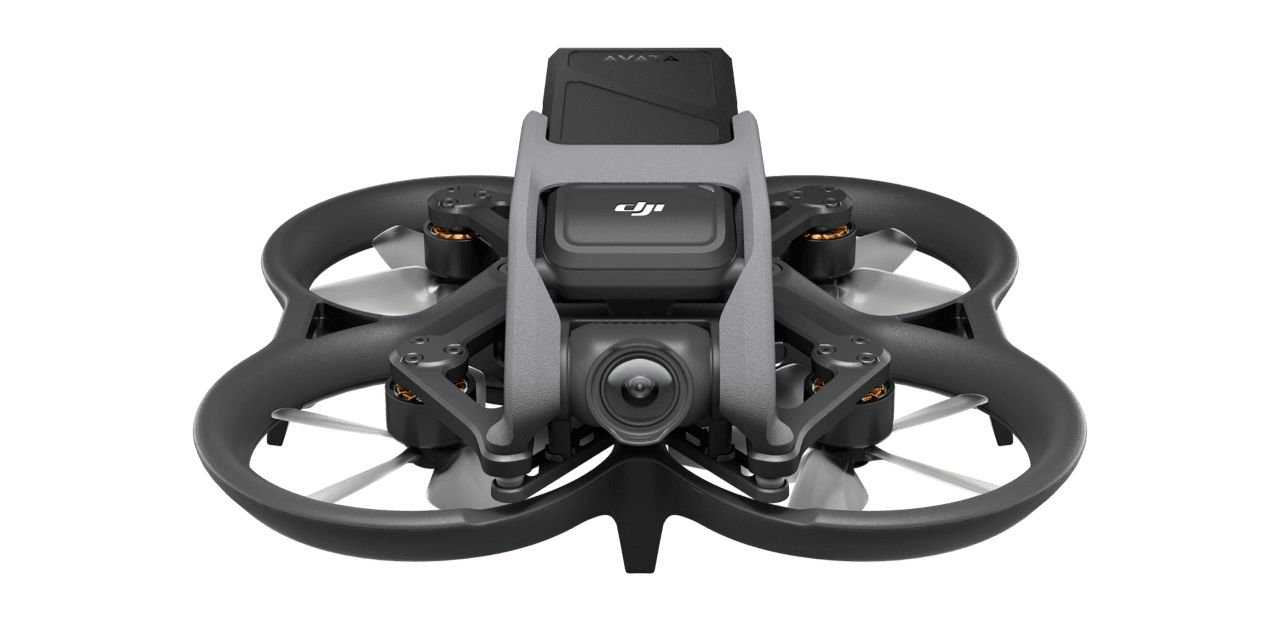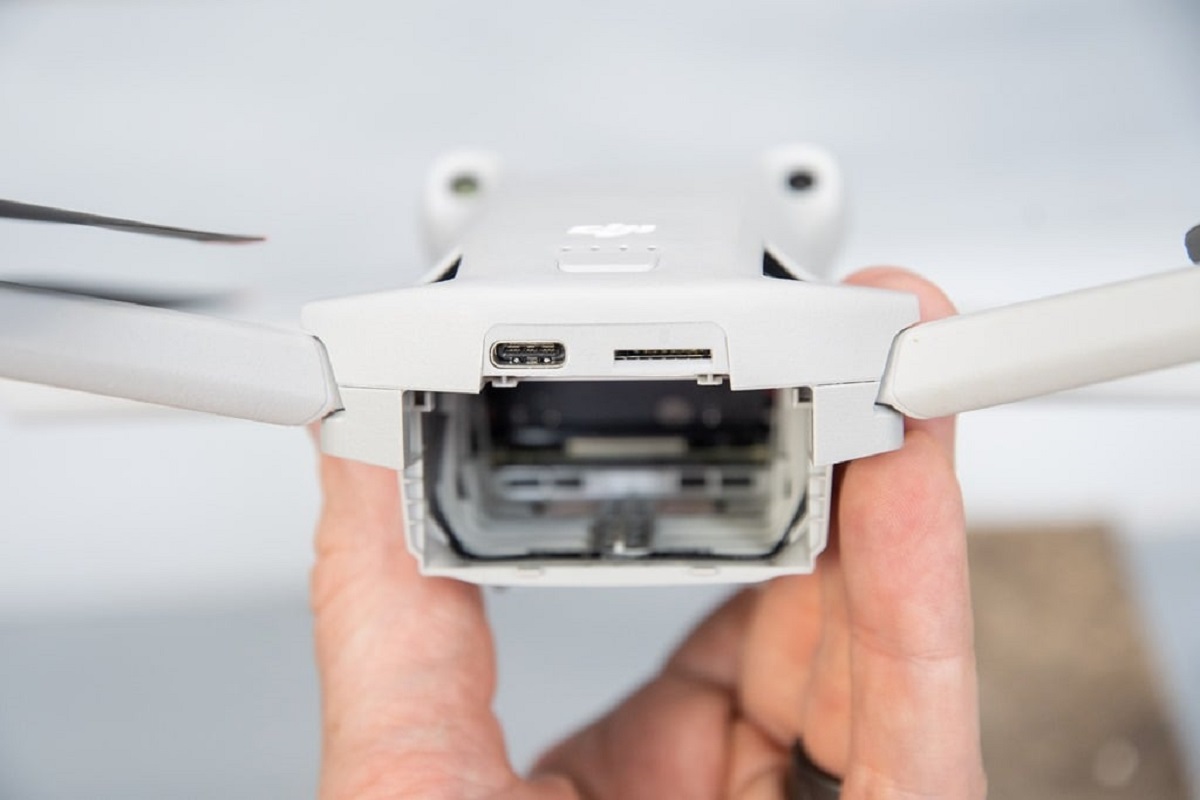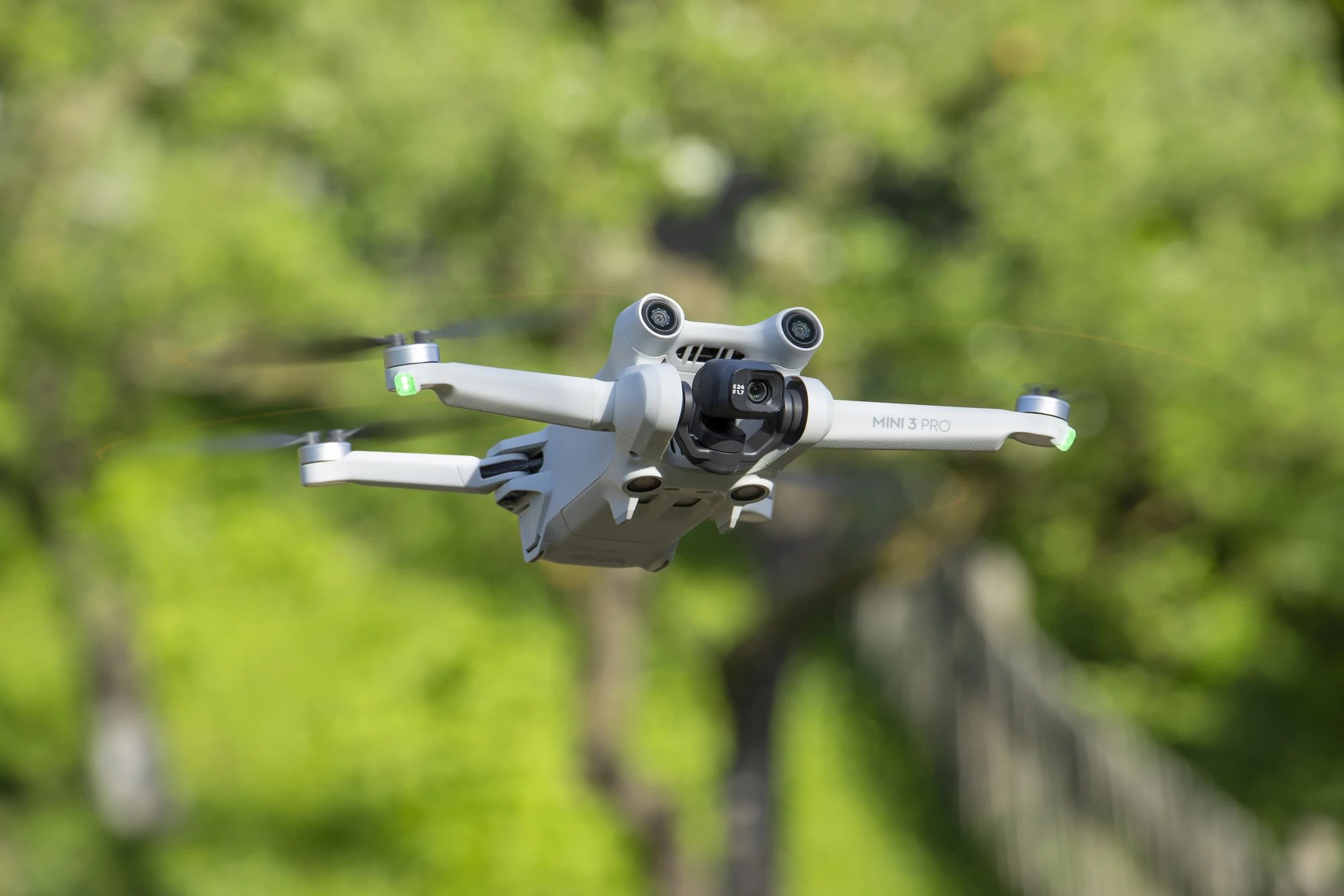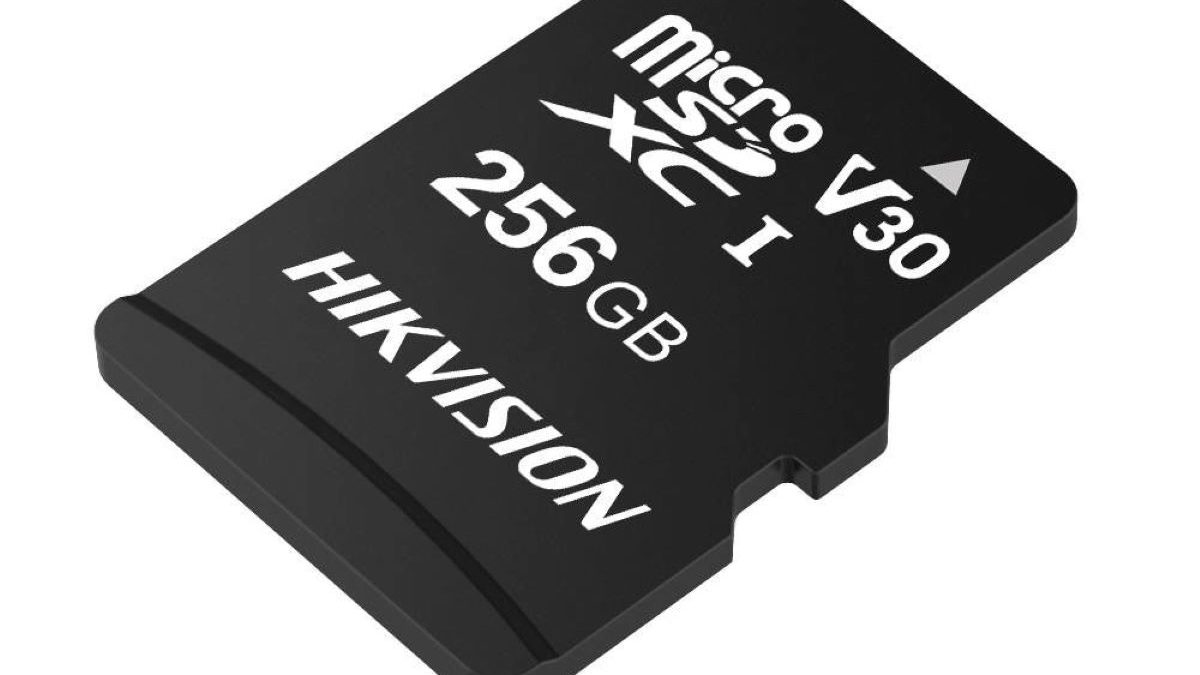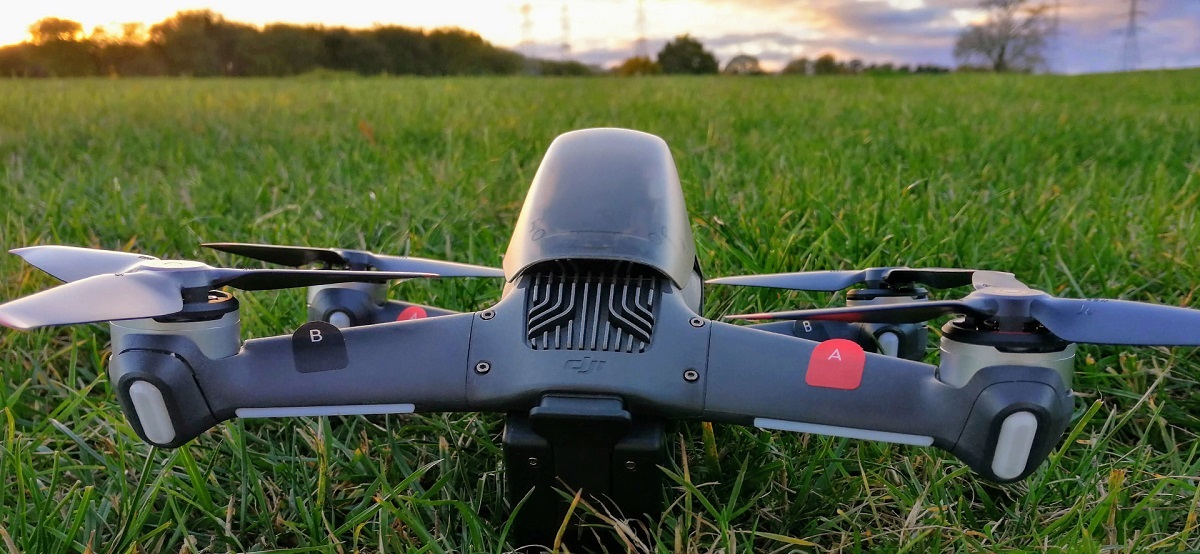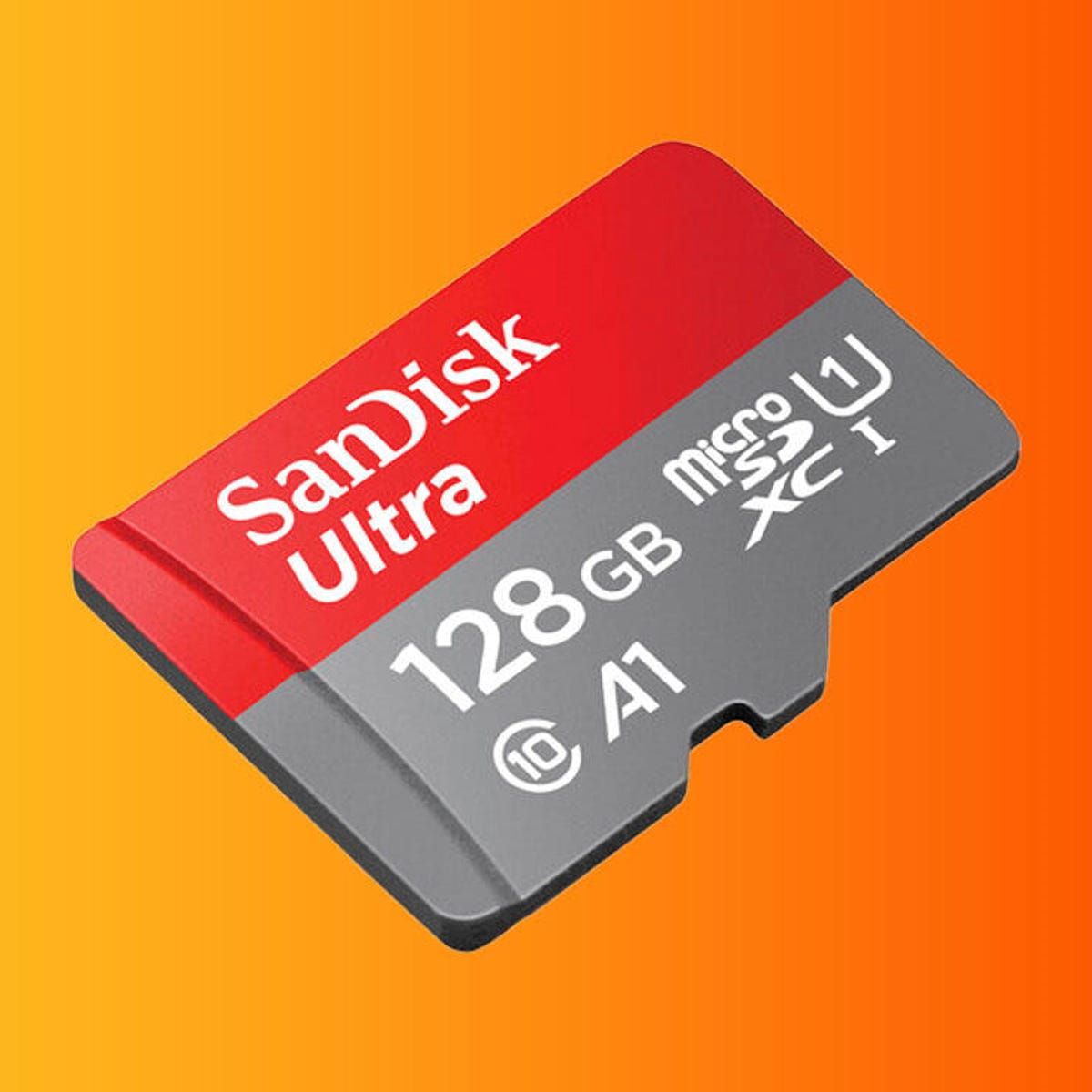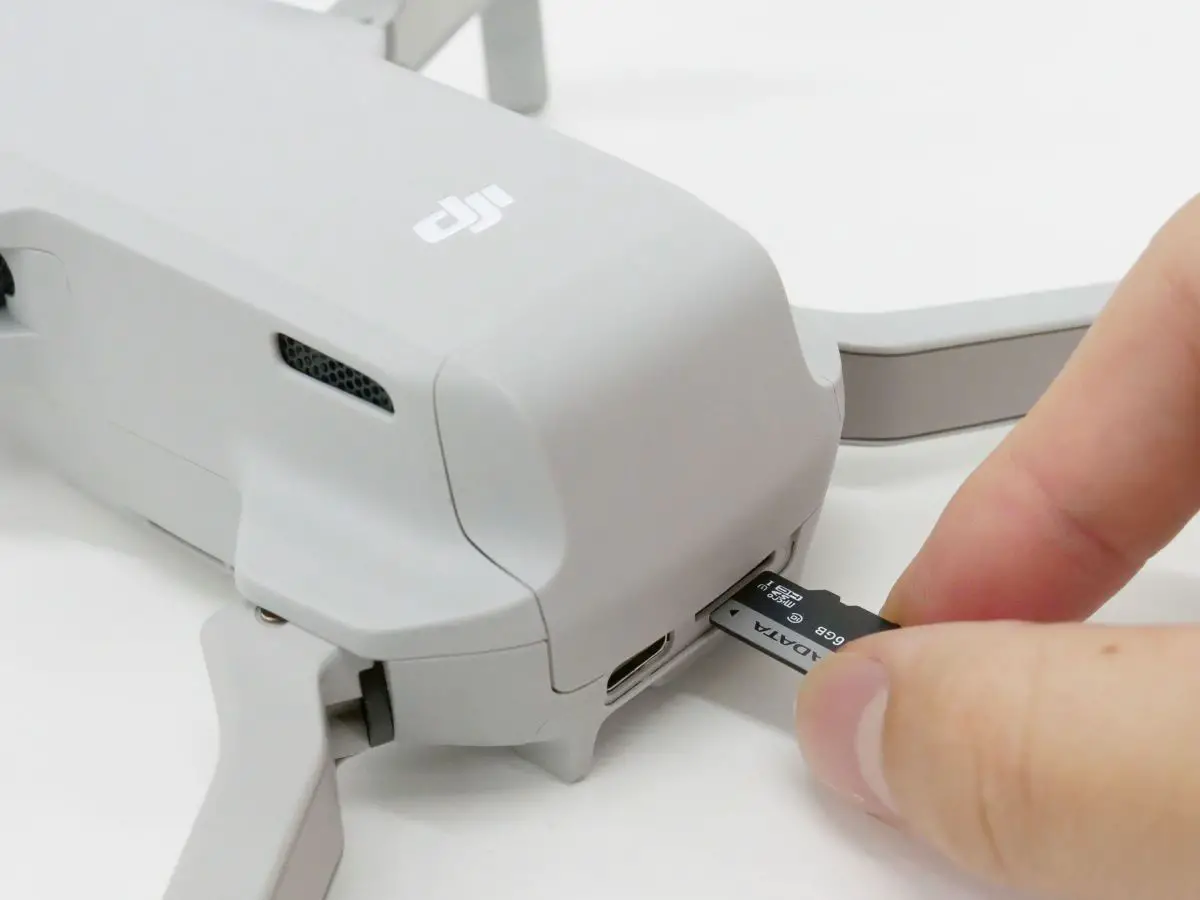Introduction
Welcome to the exciting world of DJI FPV (First Person View) drones! As technology continues to advance, drone enthusiasts are increasingly drawn to the adrenaline-pumping experience of flying at high speeds while capturing breathtaking aerial footage. DJI FPV drones have taken the market by storm, offering a fusion of speed, agility, and cinematic capabilities. In this article, we will explore the exhilarating speed capabilities of DJI FPV drones and provide insights into what makes them stand out from the competition.
DJI, a renowned leader in the drone industry, has once again raised the bar with their FPV drones. These innovative aircraft are designed to provide pilots with a first-person view, allowing them to experience the thrill of flight as if they were sitting in the cockpit themselves. With impressive speed capabilities and advanced flight features, DJI FPV drones offer a truly immersive and exhilarating flying experience.
It’s important to note that while speed is undoubtedly a captivating aspect of FPV flying, it’s essential to prioritize safety at all times. This article aims to provide an informative overview of the speed capabilities of DJI FPV drones, while also emphasizing the importance of responsible and mindful flying practices.
Without further ado, let’s delve into the world of DJI FPV drones and explore the thrilling speeds that these remarkable machines can achieve.
Understanding DJI FPV
DJI FPV drones boast a unique design that sets them apart from other consumer drones on the market. These drones combine the best of both worlds by offering the immersive experience of first-person view flying while also incorporating the features of traditional camera drones.
One of the standout features of DJI FPV drones is their ability to provide real-time high-definition video transmission to the pilot’s goggles or FPV controller. This gives pilots a truly immersive view as they navigate their drone through the air. The FPV goggles provide a live feed from the onboard camera, allowing pilots to see exactly what the drone sees.
Not only does the DJI FPV system offer immersive flying, but it also excels in capturing stunning aerial footage. Equipped with a high-quality camera that can record 4K video at up to 60 frames per second, DJI FPV drones allow pilots to capture breathtaking footage while flying at exhilarating speeds. This makes them a favorite among drone enthusiasts, filmmakers, and content creators.
Furthermore, the DJI FPV system provides a range of intuitive flight modes to suit users of all skill levels. From an easy-to-use beginner mode with built-in safety features to an acrobatic mode that unlocks the full potential of the drone’s speed and agility, DJI has designed their FPV drones to cater to pilots of varying experience levels.
With customizable settings, intelligent flight features, and the ability to switch between manual and assisted flight modes, DJI FPV drones offer a versatile and user-friendly experience. Whether you’re a seasoned FPV pilot or just starting your drone flying journey, DJI FPV provides a platform that will captivate and excite you.
Speed Capabilities of DJI FPV
When it comes to speed, DJI FPV drones are in a league of their own. These exhilarating machines offer impressive top speeds that can leave even the most seasoned pilots on the edge of their seat.
DJI FPV drones are capable of reaching speeds of up to 87 mph (140 km/h) in manual mode, making them some of the fastest consumer drones on the market. This velocity allows pilots to capture stunning footage of fast-moving objects or cover large distances in a remarkably short time.
The speed capabilities of DJI FPV drones are made possible by their powerful propulsion system and aerodynamic design. These drones are equipped with high-performance motors and efficient propellers that generate significant thrust, enabling them to accelerate quickly and maintain high speeds effortlessly.
In addition to their impressive top speeds, DJI FPV drones also offer rapid acceleration and deceleration. This means that the drone can go from a standstill to its top speed in just a matter of seconds and can also come to a stop quickly when needed. This responsiveness adds an extra element of excitement and control for pilots seeking thrilling flying experiences.
Moreover, DJI FPV drones feature a sport mode that enhances their agility and maneuverability. In sport mode, the drone can perform tight turns, quick changes in direction, and exhilarating aerial maneuvers. This mode is perfect for pilots who want to push the limits and explore the full potential of their FPV drone.
It’s important to note that while the speed capabilities of DJI FPV drones are impressive, pilots should always fly responsibly and adhere to local regulations and restrictions. Flying at high speeds requires a higher level of skill and control, so it’s essential to practice in a safe and open area before attempting fast and dynamic flights.
Next, let’s take a closer look at the results of speed tests conducted on DJI FPV drones to gauge their real-world performance and verify their advertised top speeds.
Speed Test Results
Curious about how DJI FPV drones perform in real-world speed tests? Let’s examine the results of speed tests conducted on these adrenaline-inducing machines to get a better understanding of their capabilities.
In controlled speed tests, DJI FPV drones consistently showcase impressive speeds, living up to their advertised capabilities. Pilots have reported achieving speeds close to the advertised maximum of 87 mph (140 km/h) in optimal flight conditions.
However, it’s worth noting that achieving these top speeds requires certain factors to be in place. Factors such as wind conditions, temperature, altitude, and battery life can influence the performance and speed of the drone. For instance, flying against strong winds can significantly impact the drone’s speed and maneuverability, whereas flying in calm conditions can facilitate smoother and faster flights.
Additionally, it’s essential to ensure that the drone is in good condition, with all components functioning properly. Regular maintenance, such as cleaning the propellers and inspecting the motors, can optimize the drone’s performance and speed.
Overall, the speed test results demonstrate that DJI FPV drones are capable of reaching impressive speeds, allowing pilots to capture dynamic and visually stunning footage with ease. Whether you’re chasing fast-moving subjects or simply seeking the thrill of speed, DJI FPV drones deliver an exhilarating and immersive flying experience.
While it’s exciting to experience the speed capabilities of these drones, it’s crucial to always fly responsibly and within legal limits. Observe local regulations, avoid populated areas, and fly in open spaces where you have clear visibility and control over the drone.
Now that we understand the speed capabilities of DJI FPV drones and have examined the results of speed tests, let’s explore the factors that can affect their speed performance.
Factors Affecting Speed
While DJI FPV drones are known for their impressive speed capabilities, there are several factors that can influence their actual performance and speed in real-world conditions. Understanding these factors can help pilots maximize their experience and ensure optimal speed and maneuverability.
1. Wind Conditions: Wind plays a significant role in the speed and stability of the drone. Flying against strong headwinds can hinder the drone’s performance and reduce its top speed. Conversely, flying with a tailwind can increase speed, but pilots should exercise caution to maintain control and prevent the drone from being carried away by the wind.
2. Temperature: Extreme temperatures, whether too hot or too cold, can impact the performance of the drone’s battery and motors. High temperatures can affect battery efficiency and may result in shorter flight times, while excessively cold temperatures can reduce the overall power output of the motors.
3. Altitude: Flying at higher altitudes can affect the drone’s performance due to differences in air density. As altitude increases, the air becomes thinner, reducing the drone’s ability to generate lift and maintain high speeds. Pilots should be aware of the altitude limitations stated by DJI and adjust their flight plans accordingly.
4. Battery Life: The battery life of the drone directly affects its speed and flight time. As the battery depletes, the drone’s performance can decrease, resulting in reduced speed and acceleration. Pilots should monitor the battery level and ensure they have sufficient power for the desired speed and flight maneuvers.
5. Flight Mode: DJI FPV drones offer different flight modes tailored to various skill levels. In beginner or normal mode, the drone’s speed and agility may be limited to ensure safer and smoother flights. However, switching to sport mode unlocks the full speed and maneuverability potential of the drone, allowing pilots to experience its maximum capabilities.
6. Drone Configuration: The configuration of the drone itself can impact its speed performance. Factors such as the weight of additional payloads, the condition of the propellers, and the overall maintenance of the drone can affect its speed and agility. Regular maintenance and ensuring the drone is in optimal condition can help maximize its speed potential.
By considering these factors and making appropriate adjustments, pilots can optimize the speed and performance of their DJI FPV drones. It’s crucial to maintain a balance between pushing the limits of speed and ensuring safe and responsible flying practices.
Now that we understand the factors that can affect the speed of DJI FPV drones, let’s explore some safety considerations pilots should keep in mind while flying at high speeds.
Safety Considerations
While it’s thrilling to experience the high speeds that DJI FPV drones offer, safety should always be the top priority for every pilot. Flying at high speeds requires a higher level of skill and control, and it’s essential to follow safety guidelines to ensure a safe and enjoyable flying experience.
1. Know the Regulations: Familiarize yourself with local regulations and restrictions regarding drone flying. Understand airspace limitations, no-fly zones, and any specific rules related to flying at high speeds. Adhering to these regulations will help you avoid legal issues and ensure the safety of yourself and others.
2. Choose an Open Area: Before attempting high-speed flights, choose an open area with plenty of space and minimal obstacles. This allows you to have a clear line of sight, reduces the risk of collisions, and provides room for maneuvering at fast speeds.
3. Fly in Suitable Weather Conditions: Be mindful of the weather conditions before flying at high speeds. Strong winds, rain, or fog can significantly impact the drone’s stability and maneuverability. Aim for clear weather with calm wind conditions to ensure optimal performance and control.
4. Establish Line of Sight: Maintain a clear line of sight with your drone at all times. FPV goggles can provide an immersive experience, but it’s essential to periodically take off the goggles and visually check the drone’s position and surroundings to avoid unforeseen obstacles or hazards.
5. Fly Responsibly: Use your knowledge and skill to fly the drone responsibly and within your capabilities. Avoid reckless maneuvers, especially in crowded areas or near people, buildings, or vehicles. Respect the privacy and security of others and be mindful of your impact on the environment.
6. Perform Pre-flight Checks: Before each flight, perform a thorough pre-flight check of your DJI FPV drone. Ensure that all components are securely attached, the batteries are fully charged, and that there are no visible signs of damage or wear. Regular maintenance and inspections help prevent potential issues that could compromise your safety during high-speed flights.
Remember, your safety and the safety of others should always be your top priority. By following these safety considerations and exercising responsible flying practices, you can enjoy the exhilaration of high-speed flights while minimizing the risks associated with it.
Now, let’s explore some helpful tips for maximizing your speed and performance with DJI FPV drones.
Tips for Maximizing Speed
If you’re looking to push the limits of speed with your DJI FPV drone, here are some tips to help you maximize your speed and performance:
1. Utilize Sport Mode: Switch to Sport Mode to unlock the full speed potential of your DJI FPV drone. This mode provides increased agility and responsiveness, allowing you to reach higher speeds and perform dynamic maneuvers.
2. Optimize Drone Configuration: Keep your drone in optimal condition by regularly cleaning the propellers and inspecting the motors. Ensure that there are no loose connections or damaged components that could hinder the drone’s performance or speed.
3. Choose the Right Flight Environment: Look for open spaces with minimal obstructions to give yourself more room for high-speed flights. Avoid flying near trees, buildings, power lines, or any other potential obstacles that could impede your flight or pose a safety risk.
4. Consider Weight and Payload: Minimize the weight of your drone by removing unnecessary accessories or payloads. A lighter drone will have better acceleration and higher top speeds, allowing you to maximize its performance.
5. Fly with Full Battery: Make sure you start your flights with a fully charged battery to take advantage of the drone’s maximum power output. Flying with a partially depleted battery can affect the drone’s speed and overall performance.
6. Practice Controlled Flying: Mastering smooth and controlled flying can help you maintain stability and maximize speed. Practice gradual control inputs and precise maneuvers to enhance your piloting skills, allowing you to fly at faster speeds with confidence.
7. Take Advantage of Flight Modes: Experiment with different flight modes offered by DJI FPV drones. Each mode has unique characteristics that can affect speed and maneuverability. Find the mode that suits your flying style and objectives to optimize your speed and performance.
8. Continual Training and Learning: Keep learning and improving your piloting skills through practice and experimentation. Watch tutorials, join online forums or local drone communities to gain insights and tips from experienced pilots. Continuous training will help you become more proficient in flying at high speeds.
Remember, always prioritize safety and abide by local regulations while pushing the boundaries of speed. Maintain situational awareness, stay alert, and fly responsibly to ensure a safe and enjoyable experience.
Now that we have explored various tips for maximizing speed, let’s summarize the key points and conclude our discussion on the speed capabilities of DJI FPV drones.
Conclusion
In conclusion, DJI FPV drones offer an exhilarating and immersive flying experience with their impressive speed capabilities. These drones can reach top speeds of up to 87 mph (140 km/h) in manual mode, making them some of the fastest consumer drones on the market.
With their first-person view capabilities, high-definition video transmission, and advanced flight features, DJI FPV drones have revolutionized the world of aerial photography and videography. Pilots can capture breathtaking footage while flying at thrilling speeds, resulting in dynamic and visually stunning content.
However, it’s important to remember that flying at high speeds requires skill, responsibility, and adherence to safety guidelines. Familiarize yourself with local regulations, fly in suitable weather conditions, and practice responsible flying practices to ensure a safe and enjoyable experience.
Factors such as wind conditions, temperature, altitude, and battery life can influence the performance and speed of DJI FPV drones. Pilots should consider these factors and make adjustments accordingly to optimize their speed and performance.
By following the tips outlined in this article, pilots can maximize the speed and agility of their DJI FPV drones. Utilizing Sport Mode, optimizing the drone’s configuration, choosing the right flight environment, and practicing controlled flying are just some of the strategies to enhance speed and performance.
Remember to continually learn and improve your piloting skills through training and practice. Stay up to date with the latest advancements in drone technology and techniques to further enhance your flying experience.
In summary, DJI FPV drones provide an adrenaline-pumping experience with their impressive speed capabilities. As you explore the exciting world of FPV flying, always prioritize safety, fly responsibly, and respect the environment and others around you. Embrace the speed, thrill, and creativity that DJI FPV drones offer, and enjoy the incredible journey of capturing stunning aerial footage at high speeds.







